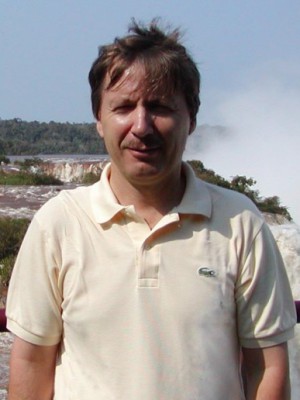abstract
The anisotropic direct magnetoelectric ( ME) properties of bilayered composites comprising magnetostrictive metglas foils and single-crystalline piezoelectric bidomain plates of 127 degrees Y-cut LiNbO3 (LNO) have been studied theoretically and experimentally. The LNO plates possessed an engineered ferroelectric macrobidomain structure with opposite spontaneous polarization vectors. Impedance, ME effect, and equivalent magnetic noise density (EMND) measurements have been performed under quasi-static and resonant conditions. Whereas the quasistatic ME effect was only two times stronger in the bidomain samples compared to their unidomain and bonded bimorph counterparts, in the bending resonance mode, the effect was up to one order of magnitude stronger: ME coefficients of up to 578 V/(cm . Oe) were obtained at ca. 30 kHz under resonance using 0.5-mm-thick crystals. EMND measurements yielded values down to 153 pT/Hz(1/2) at 1 kHz and 524 fT/Hz(1/2) under resonant conditions. A further optimization of the fabrication techniques, laminate geometry, and detection circuit is expected to allow reducing these values down to at least 10 pT/Hz(1/2) and 250 fT/Hz(1/2), respectively, and the resonance frequency by at least two orders of magnitude. Such systems may thus find use in simple and sensitive, passive and stable, low frequency and high-temperature vector magnetic field sensors.
keywords
LITHIUM-NIOBATE; COMPOSITES; SENSOR; PLATES
subject category
Acoustics; Engineering
authors
Vidal, JV; Turutin, AV; Kubasov, IV; Malinkovich, MD; Parkhomenko, YN; Kobeleva, SP; Kholkin, AL; Sobolev, NA
our authors
Groups
G2 - Photonic, Electronic and Magnetic Materials
G6 - Virtual Materials and Artificial Intelligence
acknowledgements
This work was developed in the scope of the projects I3N/FSCOSD (Ref. FCT UID/CTM/50025/2013), CICECO - Aveiro Institute of Materials - POCI-01-0145-FEDER-007679 (FCT Ref. UID /CTM /50011/2013) financed by national funds through the FCT/MEC and when applicable co-financed by FEDER under the PT2020 Partnership Agreement. It was also supported in part by the Government of Russian Federation, Grant 074-U01. The work of J. V. Vidal was supported by the FCT of Portugal under Grant SFRH/BD/89097/2012 and A. V. Turutin was supported by the NUST "MISiS" under Grant B100-01-Pi 18 "Developing grant support for academic mobility of students."



